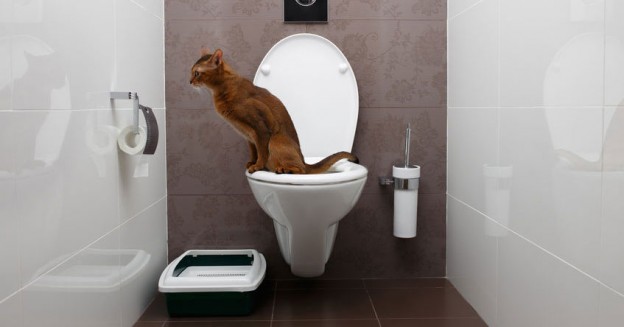Potential Risks of Flushing Cat Poop Down Your Toilet - Tips for Safer Handling
Potential Risks of Flushing Cat Poop Down Your Toilet - Tips for Safer Handling
Blog Article
We have noticed the article about Can You Flush Cat Poo or Litter Down the Toilet? down the page on the net and figured it made perfect sense to write about it with you over here.

Introduction
As feline proprietors, it's important to be mindful of exactly how we take care of our feline friends' waste. While it might appear convenient to purge feline poop down the bathroom, this practice can have detrimental effects for both the atmosphere and human wellness.
Ecological Impact
Flushing pet cat poop presents damaging pathogens and parasites into the water, positioning a considerable risk to water ecological communities. These pollutants can negatively impact aquatic life and concession water quality.
Wellness Risks
Along with environmental issues, flushing cat waste can additionally present health risks to human beings. Cat feces might contain Toxoplasma gondii, a parasite that can cause toxoplasmosis-- a possibly severe health problem, specifically for pregnant females and people with damaged body immune systems.
Alternatives to Flushing
Thankfully, there are more secure and more responsible ways to take care of pet cat poop. Consider the adhering to options:
1. Scoop and Dispose in Trash
The most usual technique of disposing of pet cat poop is to scoop it into a naturally degradable bag and throw it in the garbage. Make sure to use a dedicated clutter scoop and take care of the waste without delay.
2. Usage Biodegradable Litter
Go with naturally degradable cat litter made from products such as corn or wheat. These clutters are eco-friendly and can be safely taken care of in the garbage.
3. Hide in the Yard
If you have a backyard, think about hiding feline waste in a marked area away from veggie yards and water sources. Make sure to dig deep enough to prevent contamination of groundwater.
4. Set Up a Pet Waste Disposal System
Buy an animal garbage disposal system especially made for cat waste. These systems use enzymes to break down the waste, lowering odor and environmental effect.
Conclusion
Responsible pet ownership prolongs beyond offering food and shelter-- it likewise involves proper waste monitoring. By avoiding flushing pet cat poop down the toilet and opting for alternate disposal approaches, we can minimize our ecological footprint and secure human wellness.
Why Can’t I Flush Cat Poop?
It Spreads a Parasite
Cats are frequently infected with a parasite called toxoplasma gondii. The parasite causes an infection called toxoplasmosis. It is usually harmless to cats. The parasite only uses cat poop as a host for its eggs. Otherwise, the cat’s immune system usually keeps the infection at low enough levels to maintain its own health. But it does not stop the develop of eggs. These eggs are tiny and surprisingly tough. They may survive for a year before they begin to grow. But that’s the problem.
Our wastewater system is not designed to deal with toxoplasmosis eggs. Instead, most eggs will flush from your toilet into sewers and wastewater management plants. After the sewage is treated for many other harmful things in it, it is typically released into local rivers, lakes, or oceans. Here, the toxoplasmosis eggs can find new hosts, including starfish, crabs, otters, and many other wildlife. For many, this is a significant risk to their health. Toxoplasmosis can also end up infecting water sources that are important for agriculture, which means our deer, pigs, and sheep can get infected too.
Is There Risk to Humans?
There can be a risk to human life from flushing cat poop down the toilet. If you do so, the parasites from your cat’s poop can end up in shellfish, game animals, or livestock. If this meat is then served raw or undercooked, the people who eat it can get sick.
In fact, according to the CDC, 40 million people in the United States are infected with toxoplasma gondii. They get it from exposure to infected seafood, or from some kind of cat poop contamination, like drinking from a stream that is contaminated or touching anything that has come into contact with cat poop. That includes just cleaning a cat litter box.
Most people who get infected with these parasites will not develop any symptoms. However, for pregnant women or for those with compromised immune systems, the parasite can cause severe health problems.
How to Handle Cat Poop
The best way to handle cat poop is actually to clean the box more often. The eggs that the parasite sheds will not become active until one to five days after the cat poops. That means that if you clean daily, you’re much less likely to come into direct contact with infectious eggs.
That said, always dispose of cat poop in the garbage and not down the toilet. Wash your hands before and after you clean the litter box, and bring the bag of poop right outside to your garbage bins.
https://trenchlesssolutionsusa.com/why-cant-i-flush-cat-poop/

As a passionate reader on Can You Flush Cat Poo or Litter Down the Toilet?, I imagined sharing that article was really useful. Liked our post? Please share it. Help another person locate it. Thanks so much for going through it.
Get Started Report this page